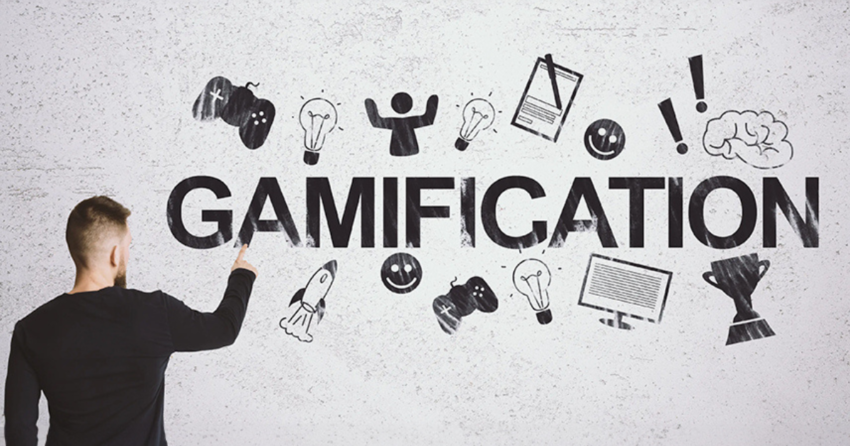In today’s digital learning landscape, gamification has become a key strategy for enhancing student engagement and motivation. EdTech gamification integrates game mechanics, such as points, rewards, leaderboards, and challenges, into educational technology platforms to create immersive and enjoyable learning experiences.
This article explores what EdTech gamification strategies are, how they function, their benefits, challenges, and their impact on modern education.
What Is EdTech Gamification?
EdTech gamification is the application of game-design elements in educational technology to encourage active learning and engagement. By incorporating features like badges, levels, and interactive storytelling, educators can make learning more appealing and effective.
Key Components of EdTech Gamification
- Points and Scoring Systems – Assigning points to activities and quizzes to encourage participation.
- Badges and Achievements – Rewarding students for completing tasks and mastering skills.
- Leaderboards – Displaying rankings to encourage friendly competition.
- Challenges and Missions – Structuring learning into interactive quests.
- Levels and Progression – Allowing students to advance through different stages as they learn.
- Immediate Feedback – Providing real-time responses to correct mistakes and reinforce concepts.
How Do EdTech Gamification Strategies Work?
EdTech gamification strategies work by leveraging behavioral psychology to increase student motivation and participation. Here’s how they function:
1. Defining Learning Objectives
Gamification starts by identifying clear learning goals and aligning them with interactive game elements. This ensures that students achieve educational outcomes while staying engaged.
2. Integrating Game Mechanics into Learning Modules
Platforms incorporate elements like quizzes, storytelling, and role-playing into courses to make learning more interactive.
3. Encouraging Active Participation
Students engage with the content through interactive lessons, quizzes, and peer challenges, which help reinforce learning.
4. Providing Instant Feedback
Gamified systems offer immediate feedback through progress tracking, encouraging students to improve and advance.
5. Using Rewards and Recognition
Badges, certificates, and leaderboard positions serve as incentives for students to stay motivated and continue learning.
6. Creating Collaborative Learning Environments

Many EdTech platforms promote teamwork by incorporating multiplayer learning games and peer interactions.
Benefits of EdTech Gamification
1. Increases Student Engagement
Gamification makes learning enjoyable, keeping students interested in educational content.
2. Enhances Knowledge Retention
Interactive and reward-based learning improves memory and comprehension.
3. Encourages Healthy Competition
Leaderboards and competitive elements motivate students to challenge themselves and perform better.
4. Promotes Self-Paced Learning
Gamification allows students to progress at their own speed, reducing stress and improving learning outcomes.
5. Develops Problem-Solving Skills
Challenges and quests require critical thinking and strategy, enhancing problem-solving abilities.
6. Boosts Collaboration and Teamwork
Multiplayer activities and group-based challenges encourage social learning and cooperation.
7. Provides Personalized Learning Experiences
Adaptive gamification tailors content to each student’s learning style and progress.
Popular EdTech Gamification Strategies
1. Story-Based Learning
Using storytelling elements to create immersive learning adventures where students follow a narrative to complete challenges.
2. Game-Based Assessments

Replacing traditional exams with interactive quizzes, simulations, and scenario-based tests.
3. Progress Bars and Levels
Showing learners how far they’ve progressed to keep them motivated.
4. Virtual Rewards and Badges
Awarding digital achievements for completing assignments and demonstrating mastery.
5. Time-Based Challenges
Encouraging quick thinking and decision-making by setting time limits on activities.
6. Social and Peer Learning Games
Allowing students to collaborate or compete in educational games to boost engagement.
Challenges of Implementing Gamification in EdTech
1. Balancing Fun and Learning
Ensuring that game elements do not overshadow educational objectives.
2. Accessibility and Inclusivity
Designing gamified platforms that cater to diverse learning needs and abilities.
3. Potential Overemphasis on Competition
Avoiding excessive focus on leaderboards to prevent discouragement among students who struggle.
4. Technology and Infrastructure Limitations
Ensuring that schools and learners have access to the required digital tools.
5. Long-Term Engagement Sustainability
Keeping gamified learning fresh and interesting over time to prevent disengagement.
Future of EdTech Gamification
The future of EdTech gamification will be shaped by emerging technologies and innovative learning approaches. Key trends include:
1. Artificial Intelligence (AI) for Adaptive Learning
AI-driven gamification will personalize learning experiences based on student progress and preferences.
2. Virtual Reality (VR) and Augmented Reality (AR) Integration
Immersive learning experiences will transport students into interactive virtual environments.
3. Blockchain-Based Rewards and Credentialing
Blockchain technology will enable secure tracking of learning achievements and digital certifications.
4. Microlearning and Short Learning Modules
Bite-sized, gamified lessons will cater to learners with shorter attention spans.
5. Increased Use of Gamified Learning Analytics
Data-driven insights will help educators refine gamification strategies for better learning outcomes.
Also Read: What Are Social Learning Communities And How Do They Work?
Conclusion
EdTech gamification is revolutionizing the way students learn by making education more engaging, interactive, and rewarding. By incorporating game mechanics into digital learning platforms, educators can improve student motivation, knowledge retention, and collaboration.
Despite some challenges, technological advancements and innovative strategies will continue to enhance the effectiveness of gamified learning experiences. As more educational institutions and organizations adopt gamification, its role in shaping the future of education will only grow stronger.
FAQs
1. What is EdTech gamification?
EdTech gamification is the integration of game-like elements, such as points, badges, and challenges, into educational technology to enhance learning engagement.
2. How does gamification improve learning?
Gamification boosts motivation, retention, and participation by making learning interactive and rewarding.
3. What are some examples of gamified learning platforms?
Popular platforms include Kahoot!, Duolingo, Quizizz, Classcraft, and Prodigy.
4. Is gamification effective for all types of learners?
While gamification benefits many learners, its effectiveness may vary based on individual learning styles and preferences.
5. What is the future of EdTech gamification?
The future of gamification will include AI-driven personalization, VR/AR experiences, and blockchain-based credentialing to further enhance learning experiences.

